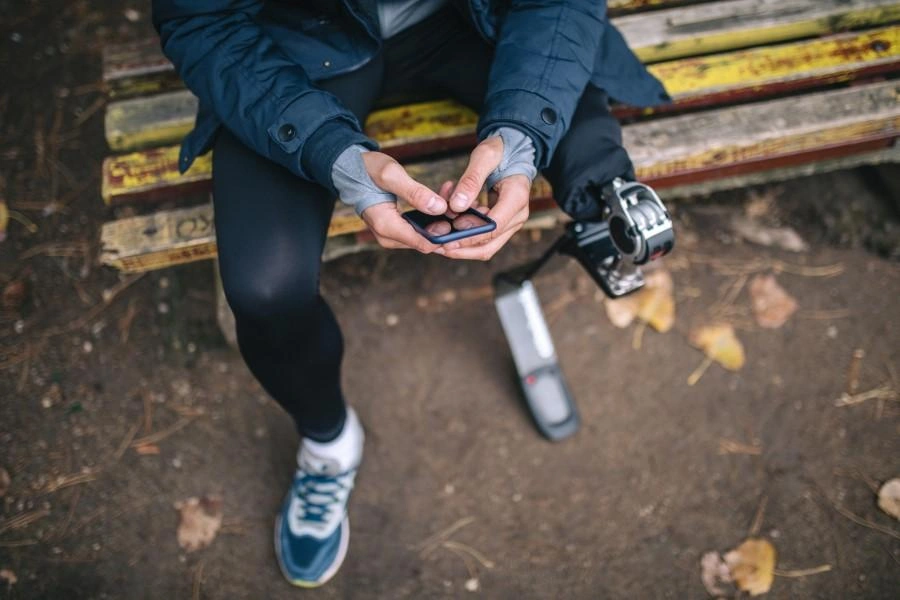Why is accessibility in technology important? In our increasingly digital world, it’s access to technology that decides who benefits from using it.
Our lives today are inextricably digital. The tech systems we rely on make our day-to-day lives more efficient and comfortable, whether we’re working remotely, learning, shopping, engaging on social media, navigating, or filing taxes online. Online services help us bypass geographical boundaries to connect with people easily and instantaneously. But the ubiquity of the internet – and how we rely on it for information, to communicate, to work and to learn – means we must continually strive for greater inclusivity among users. And a truly inclusive digital world means a widely accessible one.
Large corporations and small businesses alike shifted operations to virtual and stayed successful during the worst of the Covid-19 pandemic. With strong, reliable internet connections, video conferencing, collaboration platforms and ecommerce, business was able to carry on as usual for many.
But how accessible has technology made our world without the pressure of a viral pandemic posing greater risks for the population at large? Without an immediate need to keep the world as a whole safe, are we all still benefiting from technology to help us work, play, and communicate with ease?
At Xplor, we believe in technology’s ability to connect and unite us, no matter our abilities, location or nature. Before we get into how our products aim to help to bridge the gap, let’s talk about accessibility.
How accessible is our world?
Accessibility today relies on the availability of the internet and digital tools, services, and programs for everyone, regardless of race, gender, age, income, location, or ability. The internet should be a democratic space, available for everyone.
A 2016 study from the Journal on Technology and Persons with Disabilities found that 84 percent of people with disabilities own or use a smartphone—even more use a tablet, at 91 percent. The journal noted that, “For both populations the smartphone has come to occupy the center of their information and communications infrastructure – a critical tool supporting independence, community participation, employment, education, and more.”
GSMA’s Mobile Disability Gap Report from 2020 noted that smartphones carry embedded accessibility compliant features, such as screen-readers, voice command, and magnification, making it easier for someone with a hearing or visual disability to use. The report also strongly reinforced how important it is for people with disabilities to have access to mobile devices – more than 30 percent of people with disabilities in Kenya found having a mobile device helped them access healthcare services, education, and employment.
There are other factors that restrict our ability to use the internet and other services. Central to accessibility in tech is not just the idea of making the internet legible, but also how to apply design innovation to increase accessibility more broadly. There are still very real—but invisible—barriers that keep marginalized people from accessing important services.
These can include:
- Socioeconomic status, including lack of income. Up-front costs and high prices of devices, software, and apps can limit access to tech.
- Location, including unreliable transportation. People who lack access to transport or live in remote areas may be unable to travel to physical locations to access the services they need.
- Conflicting scheduling, and limited hours. People with schedules that don’t follow the standard work week may also struggle to easily access services.
- Language barriers, where people may be unable to access services in a common language or need an interpreter.
Why prioritizing access to tech is always the right move
Accessibility in tech and communications has been deemed a civil right by the US Department of Justice, cementing into law the ethical consensus that everyone deserves access. From a business, legal, and ethical perspective, applying website accessibility to digital resources and devices is essential.
Making sure that more and more people can use online services not only gives businesses access to new customers, it also allows for more employment and education opportunities for the general public. The advantages of accessibility in tech flow all ways, from businesses, employers, and teachers to customers, employees, and students.

Many functions that make the web accessible to people with visual and hearing impairments are now mainstays of inclusive IT design.
How has the tech world responded?
From extended subtitling and text options to text-to-speech functions and alt-text on images, many functions that make the web accessible to people with visual and hearing impairments are now mainstays of inclusive IT design. The giants of the tech world – Apple, Microsoft, and Google – have contributed significantly to accessible design, but there are many other innovative apps that provide crucial support to people with disabilities.
Both the conversation, and recent innovations focused on improving accessibility technology often centers around access for people with disabilities, and for good reason. To reach everyone, software companies must develop technologies that make it possible for people of varying abilities to use their software. Consider, for example, assistive technologies, such as Google’s Braille keyboard or Apple’s Siri function, which help users with visual and hearing impairments to connect to people and information.
The widespread adoption of software like Zoom and other video-conferencing platforms has opened up a world of professional and educational opportunities for people with limited mobility and other disabilities, and also for people who are unable to travel for financial or location reasons. When it comes to expanding access to education for children, we built a Live Learning feature in our Xplor Playground app, which allows for live-streaming of educational content and also helps families find educators who are available outside of regular work hours, or outside of their local area. This is particularly important for giving geographically isolated families and families with newborns and toddlers (who are often keeping odd hours) access to quality educational content options for their children. A 2021 Early Years Research report showed that all categories of childcare centers offering online learning saw 9 percent higher occupancy than those which weren’t. Meanwhile, Long Day Care centers in Australia using online learning apps saw an average increase of 4 percent in revenue, equating to $46K annually. The report concluded that online learning was considered “a permanent solution that will persist post-pandemic to help retain children and continue the learning process without fail.”
For similar reasons, we’re also seeing a boom in virtual fitness; on demand classes eliminate barriers for time-poor people, enabling them to work out at the times that suit them. Remote fitness options are allowing more people to take charge of their fitness, all from the comfort of their own home. It also means people with mobility issues have the opportunity to socialize while doing exercise.
Geo-location check-in is another innovative way for facilities to securely allow access to customers. Mariana Tek’s contactless check-in options help them connect with their studios with ease, avoiding crowds and friction at the front desk. This means studio employees spend less time on operations and more time interacting with clients and delivering an exceptional in-person experience. It also helps them accurately track attendance. Along with maintaining social distancing and allowing for no-touch check-in, contactless options such as Xplor Recreation’s PerfectFace feature serve other accessible purposes, too. As an intuitive, non-verbal and hands-free option, it could be a more accommodating way to gain entry for people with mobility issues, or those who cannot freely use their hands.
Today’s world offers an increasingly innovative number of services, software, and technologies that can help to confront the inequities of access in our society – but we all still have more work to do. By pushing the boundaries of who has access to information, resources, and services, more innovation in tech can deliver on its promise of easy to use, accessible digital services that also improve quality of life.

by Xplor Technologies
-
First published: October 29 2021
Written by: Xplor Technologies
